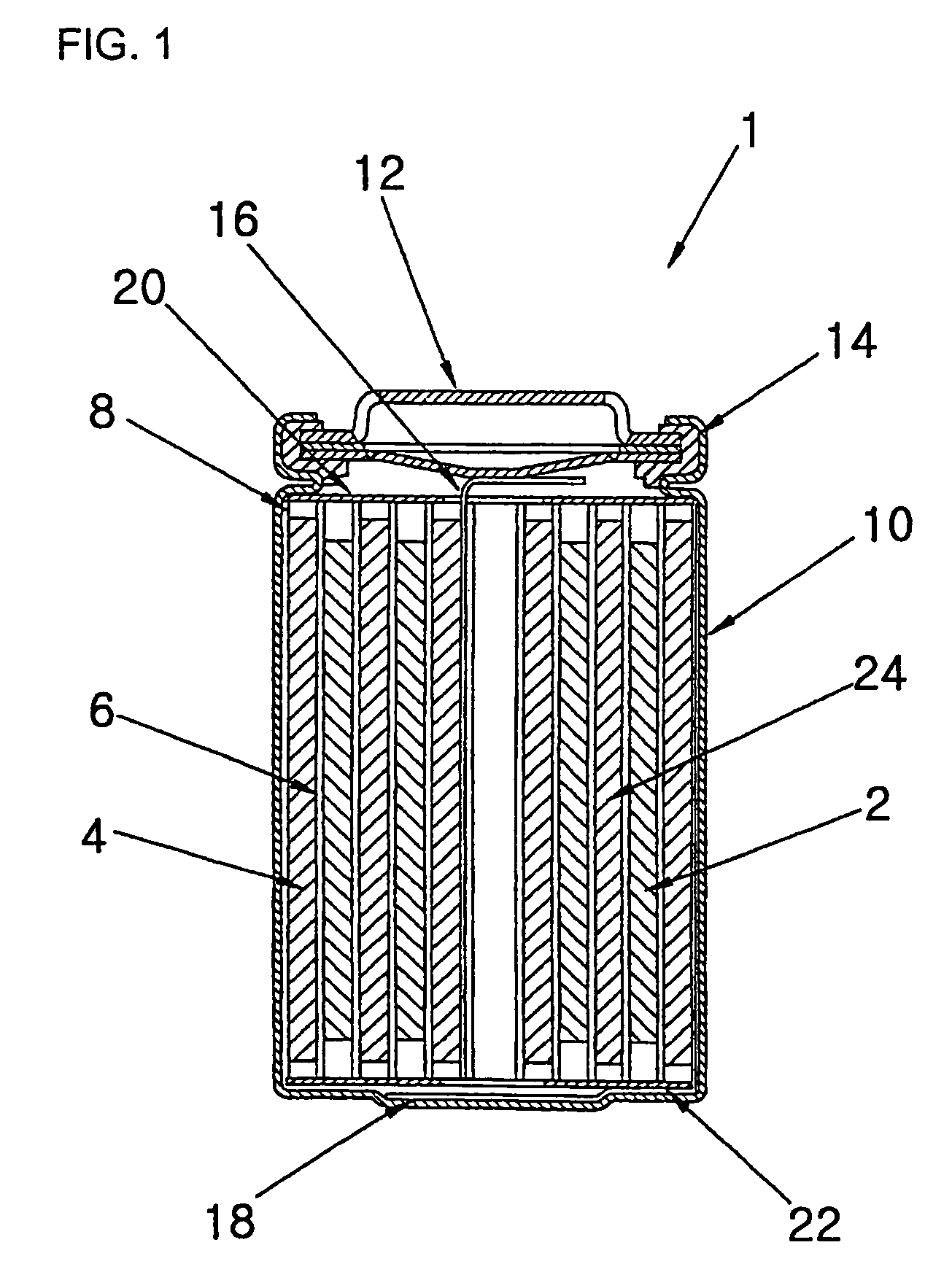Negative electrode for lithium battery and lithium battery comprising same
a lithium battery and negative electrode technology, which is applied in the direction of non-aqueous electrolyte cells, cell components, electrochemical generators, etc., can solve the problems of reducing the effective capacity of the battery by as much, and the conductivity between the outer surface of the battery case is degraded, and achieves excellent attaching strength and high capacity
- Summary
- Abstract
- Description
- Claims
- Application Information
AI Technical Summary
Benefits of technology
Problems solved by technology
Method used
Image
Examples
example 1
[0050] 75 wt. % of sulfur powder as a positive active material, 12 wt. % of polyethylene oxide (PEO) as a binder, and 13 wt. % of ketjen black as a conductive material were added to and uniformly dispersed with acetonitrile to prepare a slurry positive active material. The uniformly dispersed slurry was coated on a carbon-coated Al foil using a doctor blade to provide a positive electrode. Then, the positive electrode was cut into figures having a size of 22 cm2 and Al tabs were welded thereto to prepare a positive electrode plate.
[0051] 200 μm thick lithium metal foil was cut into figures having a size of 3×3 Cm2 and a part of the foil was rubbed three times with a brush in order to impart a roughness to the surface thereof. The average surface roughness of the metallic lithium foil was 0.5 μm, determined using an optical 3D profiling system (Model No. NT2000, fabricated by WYKO). 10 μm thick copper foil was positioned on the surface of the lithium metal foil treated to have the a...
example 2
[0053] A test cell was fabricated by the same procedure as described in Example 1 except that the negative electrode plate was fabricated by cutting 200 μm thick lithium metal foil into figures having a size of 3×3 cm2, stacking a 100 μm thick nickel foam having 85% porosity on the lithium foil, and pressing them at about 0.3 tons.
example 3
[0054] A test cell was fabricated by the same procedure as described in Example 1 except that the negative electrode plate was fabricated by cutting 200 μm thick lithium metal foil into figures having a size of 3×3 cm2, stacking 10 μm thick copper foils on both surfaces of the lithium foil, and welding them.
PUM
 Login to View More
Login to View More Abstract
Description
Claims
Application Information
 Login to View More
Login to View More - R&D
- Intellectual Property
- Life Sciences
- Materials
- Tech Scout
- Unparalleled Data Quality
- Higher Quality Content
- 60% Fewer Hallucinations
Browse by: Latest US Patents, China's latest patents, Technical Efficacy Thesaurus, Application Domain, Technology Topic, Popular Technical Reports.
© 2025 PatSnap. All rights reserved.Legal|Privacy policy|Modern Slavery Act Transparency Statement|Sitemap|About US| Contact US: help@patsnap.com


